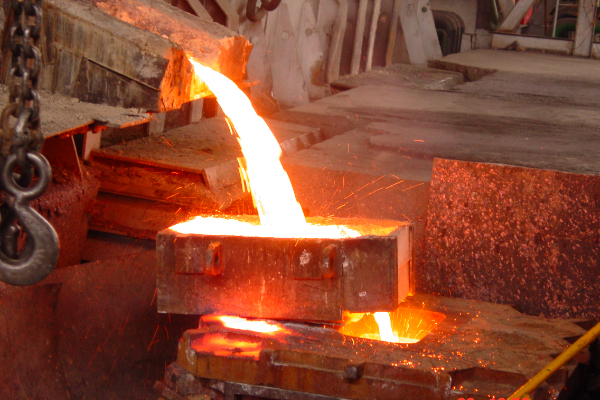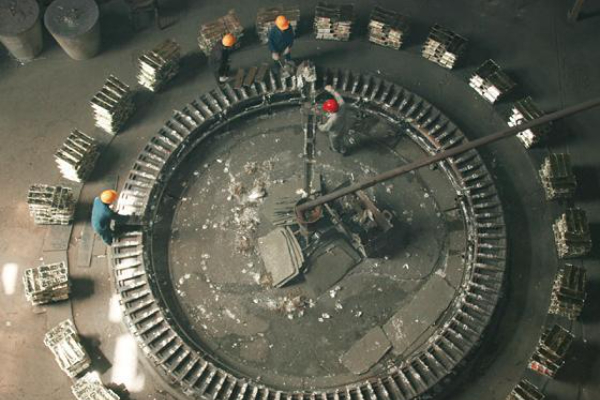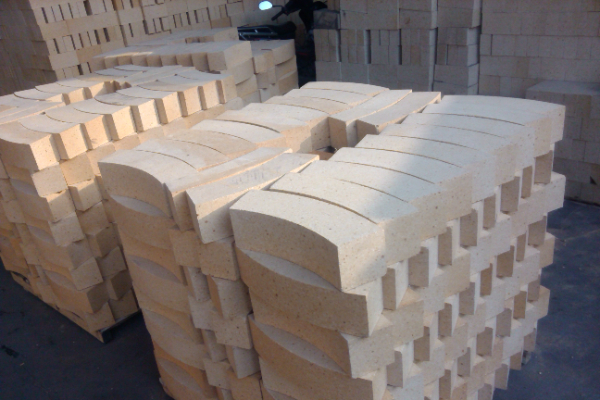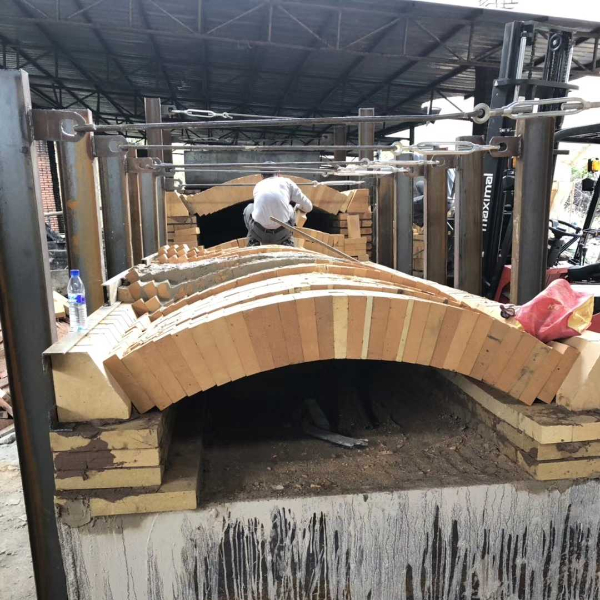A reverberatory furnace is a chamber-type flame furnace. Fuel is burned in the combustion chamber, and the generated flame is reflected from the top of the furnace to the heating chamber to heat the billet. The heat transfer method in the furnace relies not only on the reflection of the flame but also, more importantly, on the radiation heat transfer of the furnace top, furnace walls, and hot gas.

The basic structure of the reverberatory furnace
The basic structure of the reverberatory furnace is the furnace bottom, furnace wall, furnace roof, charging port, converter slag entrance, discharge port, working door, flue, and fire bridge.

What refractory materials are used in reverberatory furnaces?
The operating temperature of the reverberatory furnace head is generally 1400~1500℃, and the flue gas temperature of the furnace is generally 1150~1200℃. From bottom to top, the furnace bottom is composed of asbestos board, insulation bricklayer, clay bricklayer, magnesia-alumina brick, or magnesia bricklayer. Furnace walls are mostly made of magnesia-alumina bricks or magnesia bricks. Some important parts are built with magnesia-chrome bricks to extend their service life. Clay bricks are generally used for exterior walls. The furnace top adopts a hanging furnace roof, and the small reverberatory furnace roof adopts a brick arch, and the arch roof material is magnesia-alumina brick.

What are the raw materials used?

The reverberatory furnace can use raw coal, pulverized coal, heavy oil, crude oil, coal gas, and natural gas as raw materials. The heating value of heavy oil is zirconium and the heating speed is fast. The combustion process is easy to control and adjust, making it an ideal fuel for most factory pyro-refining furnaces.
 Rongsheng -groep
Rongsheng -groep

Wechat
Scan de QR -code met WeChat